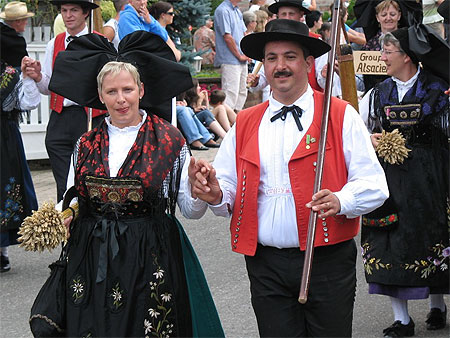
Saturday morning, I rolled out of bed at my hostel and looked out the window to see downtown Interlaken. A small municipality located near the center of Switzerland, Interlaken boasts an exciting combination of tranquil scenery and extreme adventure. I had arrived the night before so what I saw took me by surprise. I opened the window and stuck my head out. In all directions the small town is cut off from the rest of the world by snow capped mountains.
With a population of just 5500 people, Interlaken survives on the constant stream of trains delivering backpackers, climbers, and adventure seekers. Being one such tourist, I reserved a spot as part of a paragliding group. Throughout the day, flocks of these paragliders, dangling from colorful parachutes, appear in the sky and make their way to the landing zone in a field near the city’s center.
I passed many small shops and restaurants on my way to the paragliding desk and was surprised at some of the prices. Everything was extremely expensive, probably due to the fact that the city is surrounded by mountains, making transportation difficult. Also, the fact that Interlaken is a heavy tourist city probably leads to higher prices as well. I finally made my way to the rendezvous point for the paragliding trip. There I boarded a van with the rest of the tourists and the pilots we would all be trusting to get us back on the ground safely. As the van wound its way up a mountain to the north east of Interlaken, the pilots introduced themselves and briefed us on safety. With 24% of Interlaken’s population made up of foreign nationals, it was no surprise that my pilot, Bruno, was the only pilot who grew up in the city. It was also mentioned that everyone would be insured by the Swiss government during the flight. Curious about what type of government would do such a thing, I researched Switzerland’s politics. I was surprised to see that the current administration, the Swiss People’s Party (SVP), is actually fairly right winged.
We arrived at the top and suited up for takeoff. After we were strapped into the parachute, Bruno attached a string to my camera, reminding me that a camera falling form this altitude could be deadly. Many of the participants looked a little green in the face as they ran down the grassy hill and off of the hundred foot cliff, but I was full of excitement. The ground fell away quickly and I fumbled to take my camera out of the windbreaker they had provided me with. Although it was around 70 degrees at the base of the mountain, I was a little chilly up here, even with the windbreaker. When I realized this, I was amazed at Switzerland’s extreme variety of geographic features. The area is diverse, not only horizontally across the landscape, but vertically though the different regions of the mountains.

After confirming that the weather was safe enough to continue our flight, we cleared the cliffs to the left and continued toward the city. Now every inch of Interlaken could be seen t








